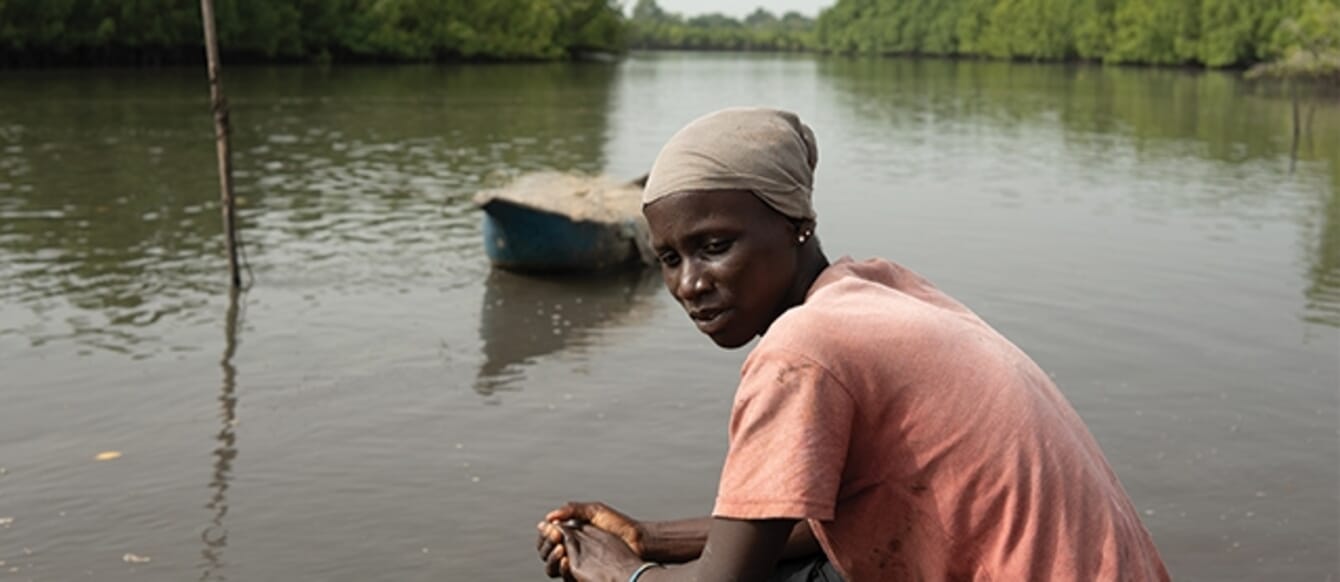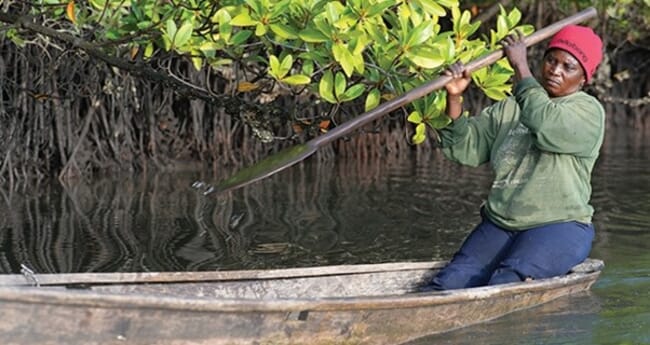
The agreement hopes to improve the lives of female oyster producers and contribute to restoring natural resources in mangrove habitats
Better oyster production and responsible resource management are vital for sustainable growth of The Gambia’s mangrove oyster sector, according to an upgrading strategy endorsed by key stakeholders on 2 February. The agreement marks the start of FISH4ACP’s activities in support of female oyster producers, while aiming to turn the tide on declining oyster stocks.
“This agreement bolsters our support to Gambia’s oyster sector,” said Fanta Bojang Samateh, deputy permanent secretary of the ministry of fisheries, water resources and national assembly matters, opening a meeting where a 10-year strategy to upgrade the oyster value chain of the West-African nation was endorsed. He added: “It is of great importance for the women who dominate this sector, allowing them to feed their families and improve their livelihoods.”
The agreement is the fruit of joint efforts of public and private sector representatives of the Gambian oyster value chain and FISH4ACP, a global fish value chain development initiative of the Organisation of African, Caribbean and Pacific States (OACPS) implemented by FAO with funding from the European Union (EU) and the German Federal Ministry for Economic Cooperation and Development (BMZ).
“The European Union is delighted to be part of this endeavour, aiming to improve the lives of female oyster producers and contribute to restoring natural resources in such precious habitats as the mangroves,” said Evangelina Blanco González, programme manager at the EU delegation to the Gambia. She added: “FISH4ACP’s holistic approach to value chain development is a great example of the sustainable development that the European Union supports.”

Gambia’s emerging oyster aquaculture sector will be supported with new production methods and an updated regulatory framework
The upgrading strategy lays down an ambitious roadmap for the sustainable development of oyster production in The Gambia over the next ten years, extending well beyond the duration of FISH4ACP, which is set to close by end in 2025.
The strategy contends that growth is possible because of increasing demand on the local market, but stresses that improved and participative resources management is essential to make the exploitation of wild oysters more sustainable and to address decreasing oyster stocks.
At the same time, Gambia’s emerging oyster aquaculture sector will be supported with financially viable new production methods, an increase in the number of oyster farms, as well as an update of the framework regulation oyster farming.
Pilot schemes to trial the sale of new oyster products, such as fresh oysters or oyster shells for poultry feed or jewellery products, as well as the exploration of new marketing channels will feed into a market strategy for the oyster, which will be based on robust product hygiene standards for consumer safety.
Market development will go hand in hand with improvements in equipment and infrastructure. These will be partly financed by value chain actors themselves, who will be supported to get better access to financial resources.
“The agreement reached today underpins our resolve to transform the oyster sector into a sustainable venture,” said Moshibudi Rampedi, FAO representative in The Gambia. She added: “FISH4ACP shows how we can make the oyster value chain resilient and meet a growing demand for nutritious, safe and affordable food, while maintaining sustainable ecosystems and leaving no one behind.”




